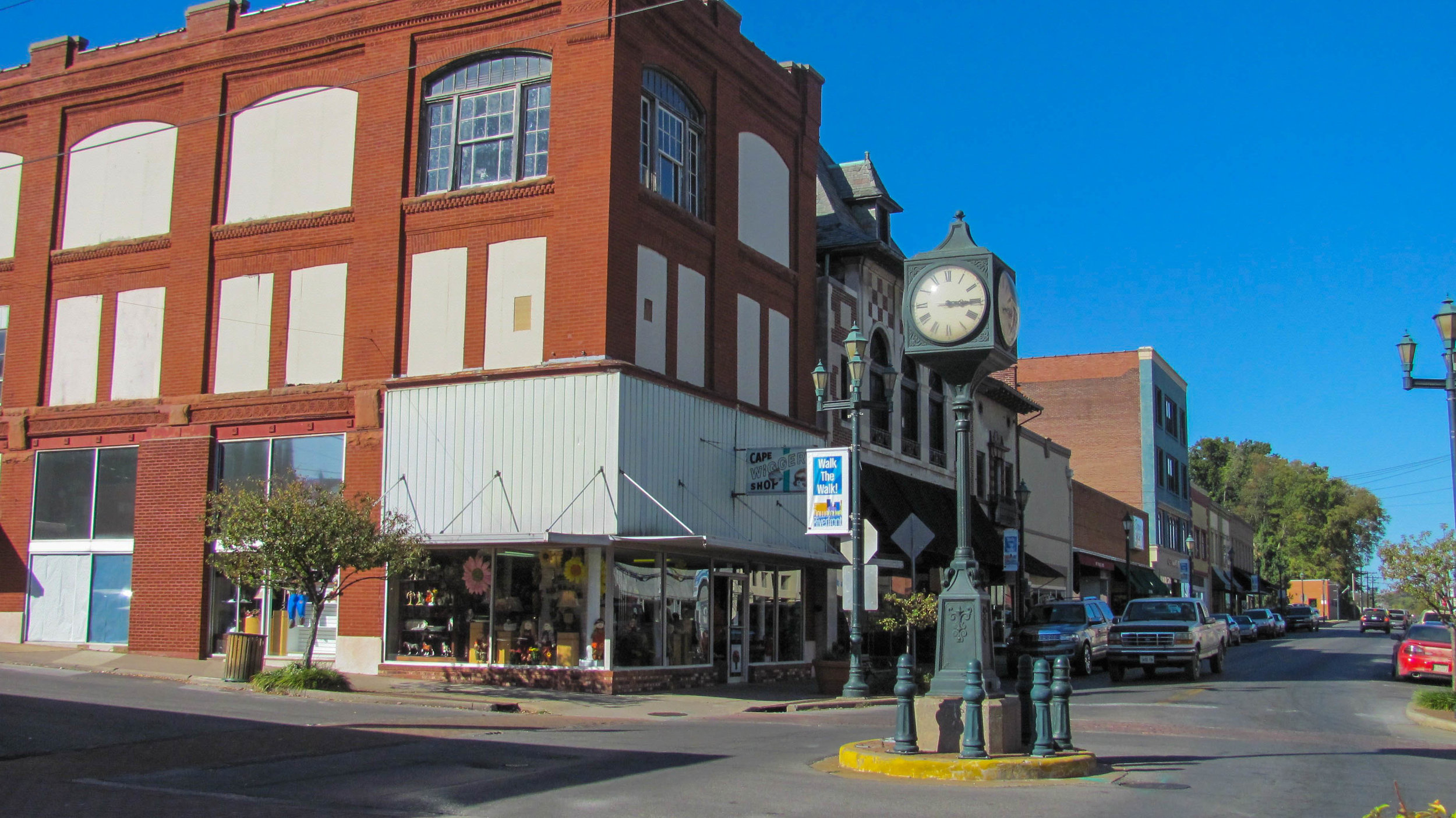Visitors Guide to Cape Girardeau
Cape Girardeau County, Missouri
Glenn House
Riverside Murals
About 1786 the French Canadian trader Louis Lorimier settled near present day St. Mary just south of Sainte Genevieve with his French Shawnee wife and other members of the Shawnee tribe. In 1793 Lorimier to Cape Girardeau after the Spanish government granted him the right to establish a trading post, which gave him trading privileges and a large tract of land surrounding his post. His mission was to oversee trade with the Native Americans. Lorimier was made commandant of the district and oversaw American immigrants of the area, who were being offered inexpensive homesteads by the Spanish. By 1803 Lorimier's Trading Post was the largest and most well known trading post between St. Louis and Memphis. On November 23, 1803, Lewis Meriwether, William Clark, and members of their expedition stopped by Lorimier's trading post for supplies and to visit with Lorimier and his family. The Red House Interpretive Center along the riverfront is a replica of a French Colonial style home built for the Lewis & Clark Bicentennial that interprets the Discovery Expedition and the life style Lorimier.
After the Louisiana Purchase Cape Girardeau was became an American town. It was platted in 1805 and incorporated in 1808, prior to Missouri statehood. Cape Girardeau served as the seat of government for the territorial district and later for Cape Girardeau County. The county seat was relocated to nearby Jackson in 1815 after the Federal government rejected Lorimiers’ Spanish land grant claims which invalidated the title to all of the city’s lots. Cape Girardeau declined as a community until 1826 when the land grants were recognized. Cape Girardeau became a river town with the arrival of steamboats in 1835 and became the biggest port on the Mississippi River between Saint Louis and Memphis. Railroads didn’t come to Cape Girardeau when the Louis Houck organized the Cape Girardeau Railroad Company is 1880.
Fort D
Cape Girardeau was one of the most fortified cities in the United States during the Civil War. This southeastern Missouri city earned this military distinction because of its geography. It was the first high ground north of the confluence of the Ohio and Mississippi rivers, and provided a strategic position from which to fire on approaching Confederate gunboats. The Civil War Battle of Cape Girardeau took place April 26, 1863. The Union and Confederate armies collided in a fierce, four-hour artillery barrage on this day in which 23 Union and 30 Confederate soldiers were killed. All that remains of Cape Girardeau’s fort is Fort D which has self-guided tours and is the site of reenactments throughout the year.
Cape Girardeau has more than a day’s worth of attractions to see. Historical museums include the Glenn House, the River Heritage Museum, and the Red House Interpretive Center. Historical sites include the Common Pleas Courthouse and Fort D. For nature lovers a visit to the Cape Girardeau is a treat as is the Capaha Park Rose Garden. Art lovers can visit the Crisp Museum on the River Campus of Southeast Missouri State University. Numerous murals commemorate the city's history. The largest and perhaps most dramatic is the Mississippi River Tales Mural, located on the city's downtown floodwall. Covering nearly 18,000 square feet, it spans the length of the downtown shopping district and features 24 panels. Behind the floodwall lies the Riverfront Park where riverboats dock and visitors can view the Mississippi River.
www.visitcape.com - The official website of the Cape Girardeau Convention and Visitors Bureau.















